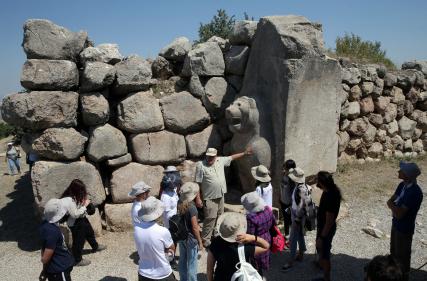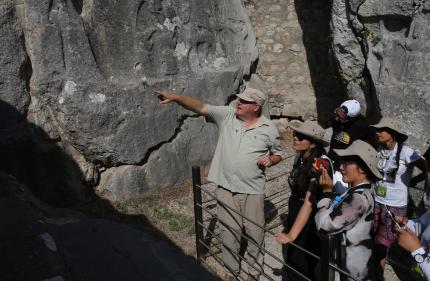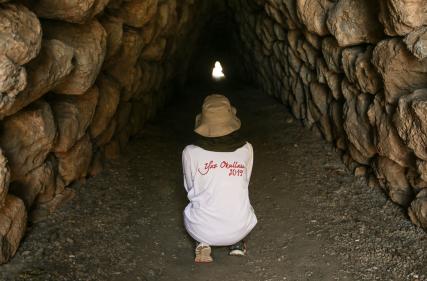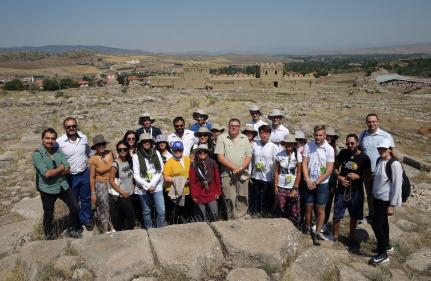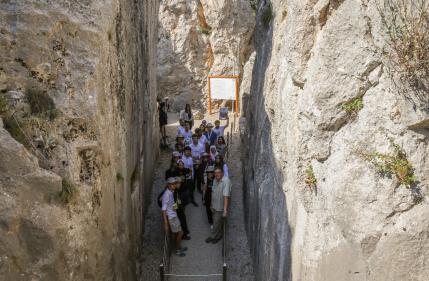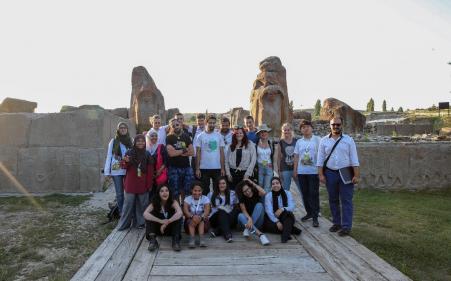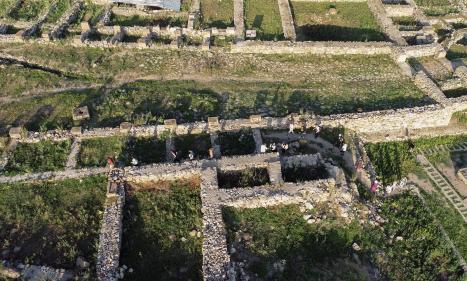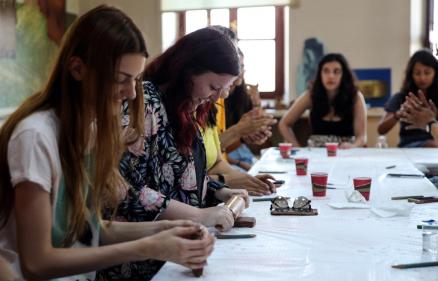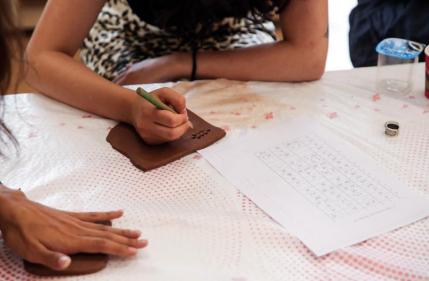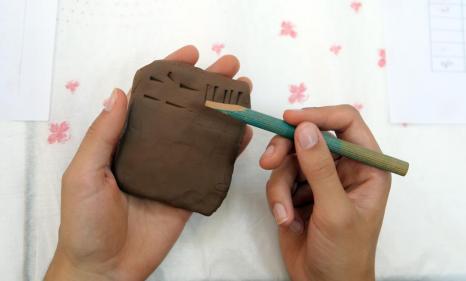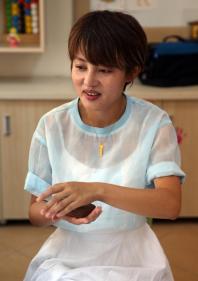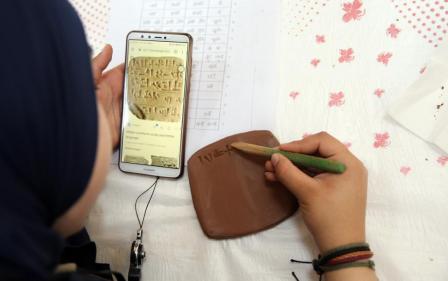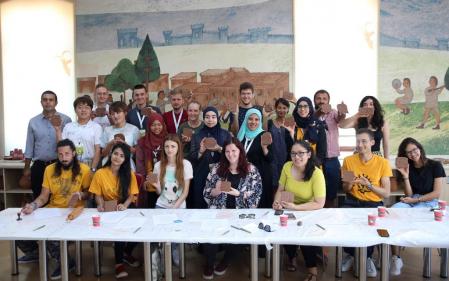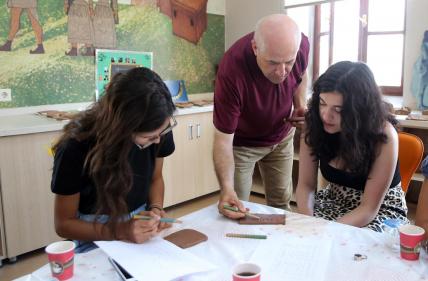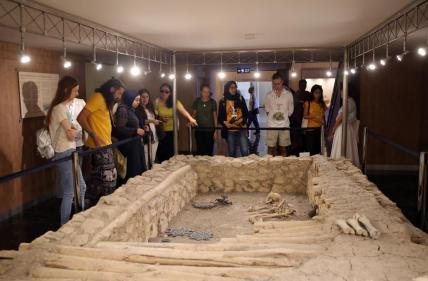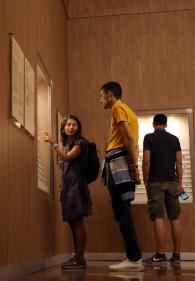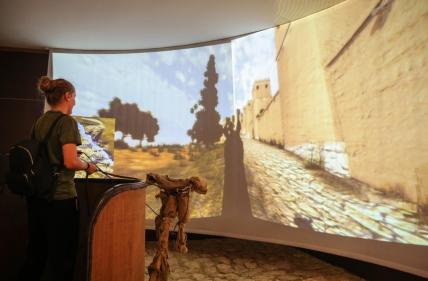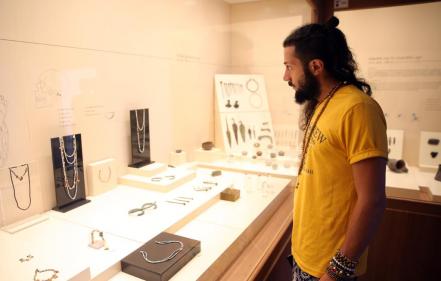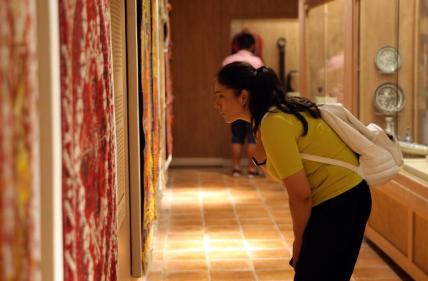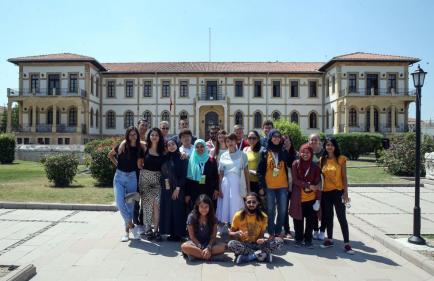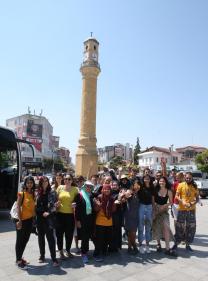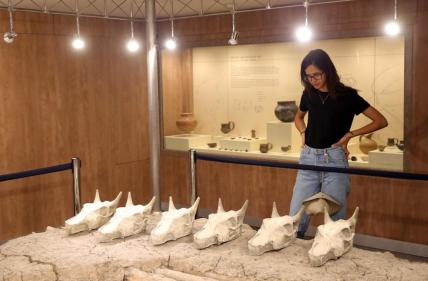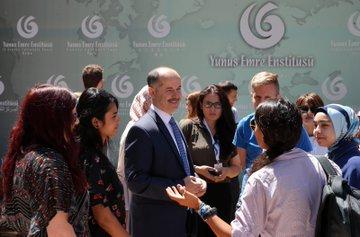Young Archaeologists on The Trail of Hittite Civilization
Yunus Emre Institute's Archaeology Summer School has brought together many social scientists including archaeologists, historians, geographers and art historians from different countries around the world and continues to host them in Turkey.
The Archaeology Summer School participants have so far had the opportunity to see many historical sites in Turkey which are included in the world heritage list, namely Gallipoli, Troy, Ephesus, Zeugma Mosaic Museum, Assos and Göbeklitepe before paying a visit to Yunus Emre Institute's headquarters in Ankara. The participants have met Institute President Prof. Dr. Şeref Ateş and talked about their experiences in Turkey. Nur Syazwani Naqibah BINTI Md Baseri, who attended the program from Malaysia, said: "Thanks to the Archaeology Summer School, I have visited the sites which I have read about in the book and which I was dreaming of visiting. I would like to thanks you for making my dream come true," she said.
Following the visit to the Institute's headquarters, the participants went to the Museum of Anatolian Civilizations and toured around Ankara Castle, one of the leading landmarks of Ankara.
The Archaeology Summer School's stay in Ankara was followed by a visit to Hattusa, a historical site discovered by French architect Charles Texier in 1834 and that dates back to 5,000 years ago. The visits to Hattusa and Alacahöyük historical sites were conducted with support from Çorum Provincial Directorate of Culture and Tourism and led by Hattusa Historical Site Excavation Head Assoc. Prof. Dr. Andreas Schachner.
At the beginning of the program, Schachner delivered a lecture on the historical sites.
Following the lecture, the participants took part in the excavation work in the Hattusa Historical Site, an activity they said they have always dreamed of.
Schachner indicated that they were glad to host the participants of the Archaeology Summer School. "Today, in Hattusa, we are entertaining students from various disciplines including archaeology, history, art history and other social sciences who came to Turkey from 21 countries. Thanks to Yunus Emre Institute, they have had a chance to visit and learn more about the places with Turkey's cultural heritage and traces from its past. Thus, they have become acquainted with the rich cultural heritage of Anatolia. In my opinion, this is a very nice experience. As the head of the excavations in Boğazköy and Hattusa, I have stated that I would gladly lend support to this program. Indeed, today, with the students and Yunus Emre Institute's officials, we have toured around the Hattusa Historical Site and ongoing excavations. In this way, they have seen and learned about the most precious sites and works of the Hittite culture. I believe that they will certainly make use of this information in their own archaeological works," he said.
The participants also paid a visit to Alacahöyük Historical Site, another cultural asset of the region.
Having completed the cultural and historical trips in Hattusa, the participants met Çorum Deputy Governor Recep Yüksel and Boğazkale District Governor Yunus Ataman.
The Archaeology Summer School enables its participants from the US, Germany, Albania, Austria, Bosnia and Herzegovina, Czechia, China, Morocco, South Korea, Georgia, Croatia, India, Italy, Kazakhstan, the UK, Iran, Lebanon, Malaysia, Egypt, Romania, Tunisia and Ukraine to build strong ties with Turkey. The program's next and final destination will be Istanbul.

